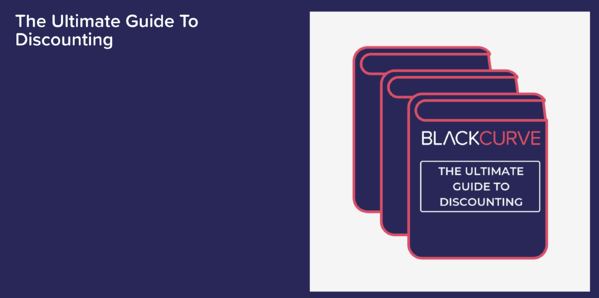
Pricing Strategies are necessary as most of us make purchasing decisions based on price so of course setting the right price takes on enormous importance when you are starting up your eCommerce company.
This can sound terribly daunting to any newcomer but don't despair. Yes, eBay and Amazon use highly competitive pricing tools to set their prices dynamically but there are ways you can compete - and play them at their own game.
Where to start with your competitive pricing strategy for eCommerce
When it comes to pricing, don't just think about the product you are trying to sell online, consider the value it supplies and your eCommerce USP.
It might be that you need to step into your customer's shoes for a while and ask yourself questions about your products and store. Why would people choose to buy your products as opposed to those of your competitors?
Number 1: Know Your USP
To realise your USP is a very good starting point on your pricing journey. Your USP serves as your compass and helps you navigate through the competition; it gives customers a reason to choose your company rather than your competitors - and to (hopefully) keep returning.
It is necessary to identify what makes your business stand out from the crowd and you need to shout this from the rooftops: some examples could be all UK manufactured goods, free delivery, a unique product showcase, giving money to a charity on every purchase, more choice, quality, greater assortment of sizes/colours etc.
Not On The High Street has an award-winning website where you can find highly original gifts. The company supports over 1500 British small businesses, providing them with an attractive platform on which to sell their wares. Their customers know that what they buy will not be available elsewhere. This is their USP.
With pricing competition at an all-time high, retailers have to think outside the box when crafting a marketing or promotional strategy for their online store. Also, understand market demand and fashion. Make sure that you are up to date with current trends and use products like “Google Trends” or “Google Insight” to check the popularity of SKUs.
Number 2: Sell on Value
Value-based pricing ensures that your customers are willing to pay your prices for the value they’re receiving. With this eCommerce pricing strategy you create an experience for your customers that's most aligned to their expectations whilst at the same time avoiding short-changing yourself.
Customer communication is the key to unlocking the information that you need to implement value-based pricing. Explore what it is that customers most value from your store - is it, for example, the variety of products, quality, durability, comprehensive sizing, excellent customer service, lifetime returns policy etc?
Value-based pricing strengthens your brand name, helps build better customer relationships and ultimately improves your bottom line.
Really it's the only true win-win scenario for both you and your customers because customers that are happy to pay for the value they receive are customers that buy again. One study found that increasing customer retention by 5% can increase profits by up to 125%.
A customer-first approach and clear, strong communication will always improve value. Start creating more value for your customer in little ways, and you’ll quickly see what a huge difference it makes across your whole business.
Number 3: Offer a Loss Leader
Want a way to entice more customers to your online store? The loss leader pricing strategy assumes that an item sold below market value will encourage customers to buy more overall.
Using this strategy, online store owners have the opportunity to upsell, cross-sell and increase the total shopping basket value. Even if the profit is not hugely impressive, this strategy stimulates client interest for future purchases.
Maybe the value of a customer purchase outweighs the value of the transaction so choose products that have a low CPA (cost per acquisition), to minimise loss. The end goal is to sacrifice losing money on one item in order to make a profit on other products.
This strategy can work wonders, resulting in a boost to overall sales - but don't overdo loss leading prices or customers will always be expecting "cheap" items from your website.
Number 4: Discounts
Yes, the lowest price doesn't always win the sale but everyone loves a bargain so, used wisely, discounting can increase traffic to your online store - or even help move unsold stock. Discounting periodically is no bad thing as long as you don't go overboard and gain an unwanted reputation as the bargain seller.
Discounts can come in the form of sales, coupons, rebates, seasonal pricing or offers, e.g. two for one, three for 2 etc. In reality, there are only three types of discount:
- A percentage discount on a product
- A cash amount discount on a product
- Selling a product for a fixed, reduced price
Discounts are great for attracting a more price sensitive group of customers.
Number 5: Use Pricing Intelligence Software
We've kept the best till last!! If competitive pricing is the foundation of your game plan, pricing intelligence is the key to your ultimate success. In order to price right and gain the upper hand in increasing market share and sales, it's essential to monitor your competition and know the profitability of your products.
You need to know what’s happening in the market at any given time so you can use optimal pricing at the optimal time.
Pricing intelligence tools help you gain pricing insights, identify comparative price distributions and trends, your competitors’ terms of sale, pricing policies and how they differentiate their products from yours. Pricing intelligence information is available 24/7 to help you make critical, strategic short-term decisions, while also fulfilling long-term goals.
In conclusion, building an online business involves a lot of experimentation to understand what pricing strategy works most advantageously for your particular business. We suggest experimenting with some of the above competitive pricing strategies for your eCommerce store.
One thing is for sure though, pricing is such a powerful tool that in order to be successful and competitive you need to master the art of getting it right sooner rather than later.
Related Posts
Pricing Experiments for Ecommerce Companies
Ecommerce Pricing Strategies That Boost Sales
8 Discounting Strategies for Ecommerce Companies
Top 5 Pricing Strategies for Ecommerce Sites
Why is a Pricing Strategy the Key to Selling Success in Online Retail
12 Ways to Tempt Your Online Customers
Online Pricing: How to Beat the Competition
Sources
https://www.easystorehosting.com/blog/ecommerce-competitive-pricing-strategies
http://www.statista.com/markets/413/e-commerce/
http://www.entrepreneur.com/article/244085
http://wisepricer.com/blog/is-your-pricing-strategy-costing-you
https://www.shopify.co.uk/blog/14122681-9-strategies-for-profitably-pricing-your-retail-products
https://www.shopify.co.uk/blog/6532021-6-tips-to-develop-an-ecommerce-pricing-strategy
https://www.quora.com/What-are-some-of-the-best-pricing-strategies-for-online-retail
http://www.netmba.com/marketing/pricing/
http://www.marketingdonut.co.uk/marketing/marketing-strategy/pricing/choose-a-pricing-strategy
http://www.retailresearch.org/onlineretailing.php
http://www.economist.com/topics/online-retailing
https://www.nibusinessinfo.co.uk/content/advantages-and-disadvantages-online-retail
http://www.forbes.com/sites/theyec/2013/02/22/3-ways-to-out-price-your-competition/#1403738056c3
http://www.golmn.com/5-ways-to-outwit-and-outprice-your-competition-in-2012/
http://upstreamcommerce.com/7-key-steps-to-outprice-outsell-outperform-your-competition/
Priceless: The Hidden Psychology of Value by William Poundstone 2011


